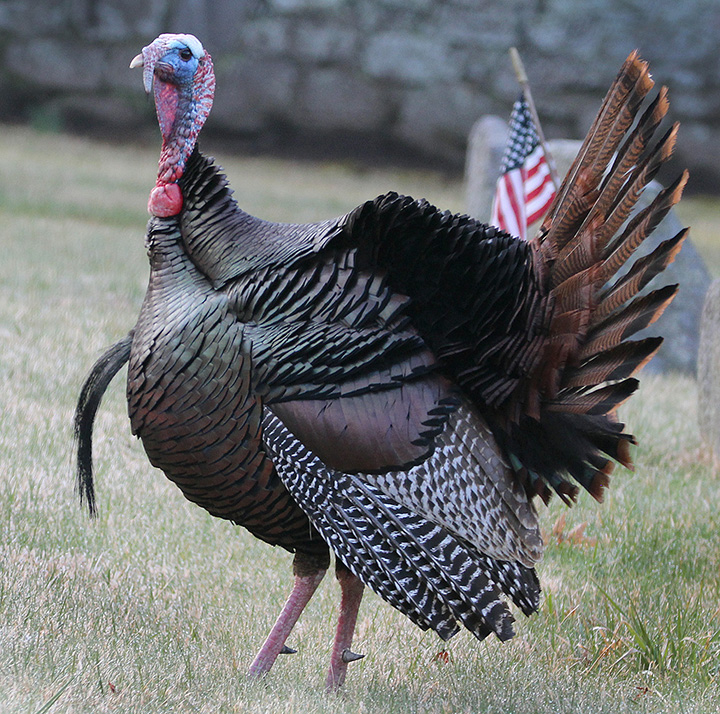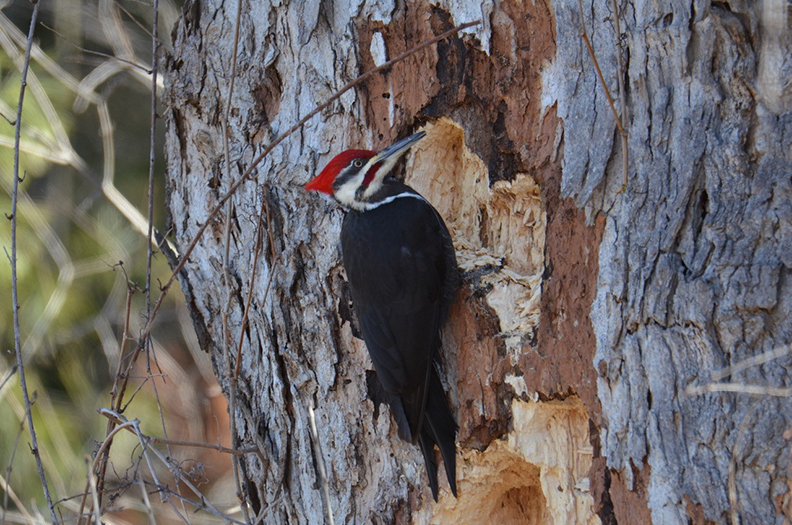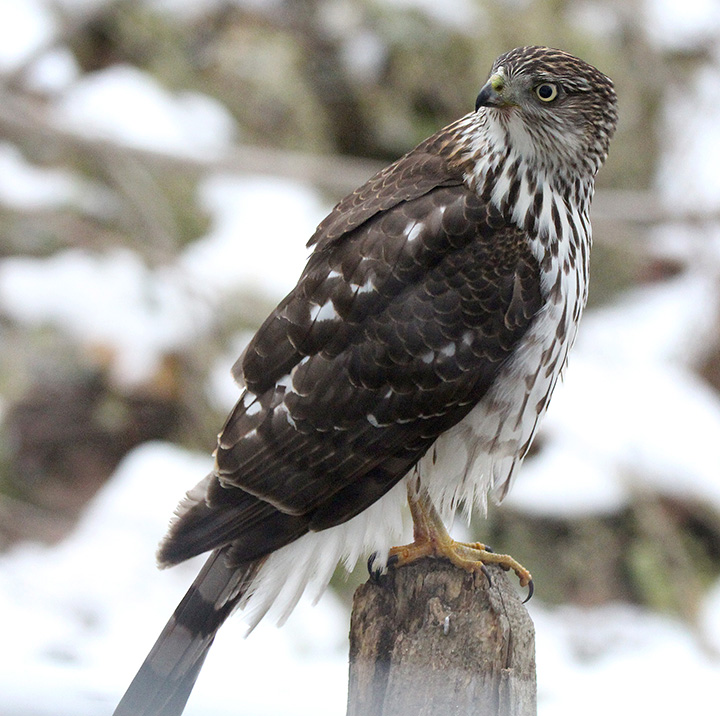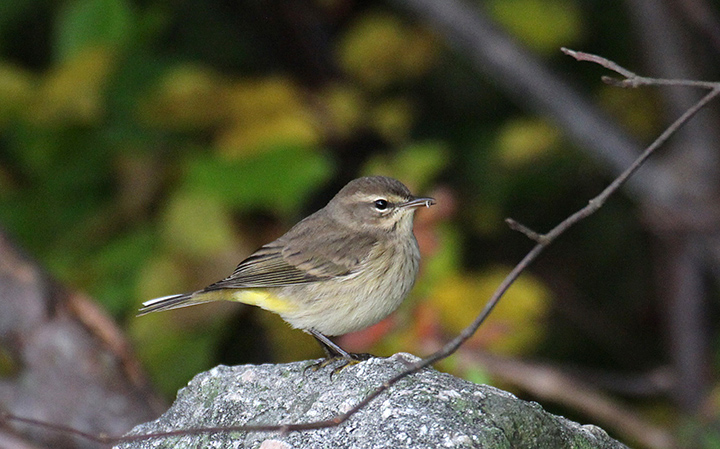Talking Turkey

PHOTO: A wild turkey struts through a cemetery in New England this spring. Chris Bosak Photo

by Chris Bosak
Weirs Times Columnist
Another Thanksgiving is upon us, and I want to express my gratitude for my family and friends.
I also want to say thank you to readers of this column for making it so enjoyable to write for all these many years. Also, a big thanks goes to newspapers like Weirs Times for doing their best in an extremely difficult environment to keep readers informed of important local happenings. And, of course, for running this column.
It wouldn’t be Thanksgiving without a bird column listing fun facts and figures about the wild turkey. But first, I want to share some of my personal favorite experiences with wild turkeys.
One of my more recent sightings came this summer while I was on my commute to work. I drove past a small cemetery and noticed a few turkeys walking among the grave markers. I turned into the cemetery and was able to get a few interesting photos of the spectacular birds.
I took two trips up north this summer and fall to look for moose. While I was shut out on the moose search, I did come across other interesting wildlife. On both trips, I found large flocks of wild turkeys that kept me entertained.
I recently changed jobs and now work from home, but my previous place of employment had a flock of wild turkeys that was frequently seen on campus. The turkeys would show up at the strangest places such as right next to buildings or in parking lots or otherwise among people. This flock seemed to have no fear of humans, or anything else for that matter.
Although I’ve never had turkeys visit my birdfeeder like so many photos I have seen over the years, I have had turkeys in my yard, and it is always jarring at first to see such large animals walking across the grass. When I lived in a house in the woods, it was interesting to see them slowly disappear into the endless forest.
This seems like a good place for one more mention of gratitude. All these sightings would not be possible without the hard work of the states and wildlife biologists who championed the re-introduction programs for wild turkeys. Wild turkeys were extirpated from many states before re-introduction measures were taken. Obviously, those efforts have paid off and the wild turkey population is thriving throughout New England again.
Now on to a few wild turkey facts:
A male turkey is a tom; a young male is a jake. A female turkey is a hen; a young female is a jenny. A baby turkey is a poult. A group of turkeys is a flock.
Wild turkey meat is packed with protein and is low in cholesterol and harmful fats. Store-bought turkeys are also healthy, but may also contain steroids, antibiotics or other man-made chemicals.
Despite the tame nature of some, their survival instincts and keen eyesight make wild turkeys difficult to hunt, both for wild predators and humans. Turkeys also have excellent hearing, so sneaking up on a turkey on the leaf-covered floor of the woods is not a good hunting strategy.
Finally, one of my favorite facts about wild turkeys is they eat ticks. The tiny critters that can wreak so much havoc on humans are part of a varied diet for turkeys, which also includes acorns, fruits, corn, and a variety of seeds.
Happy Thanksgiving everyone. Enjoy your turkey.
Chris Bosak may be reached at chrisbosak26@gmail.com or through his website www.birdsofnewengland.com



